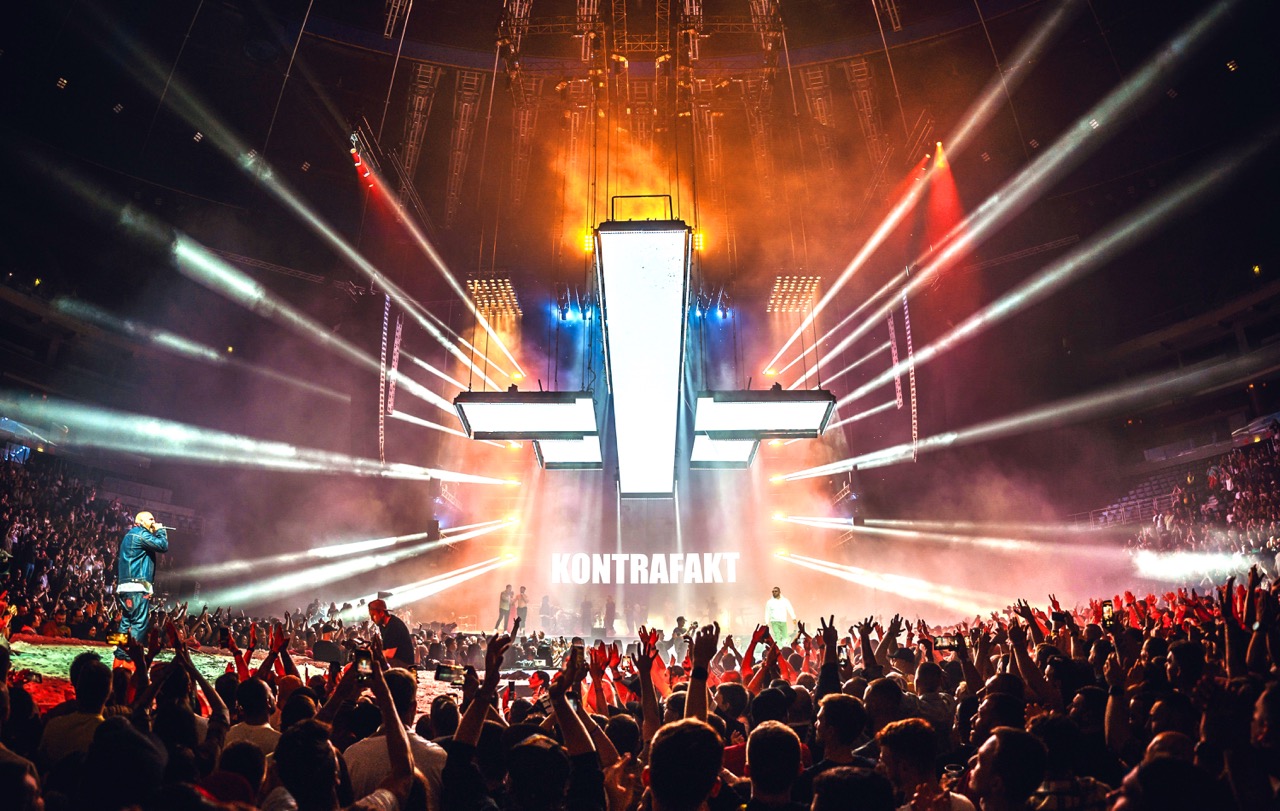Anatomy of a Rig – Martin Hruška at the O2 Arena Prague
Posted on March 5, 2024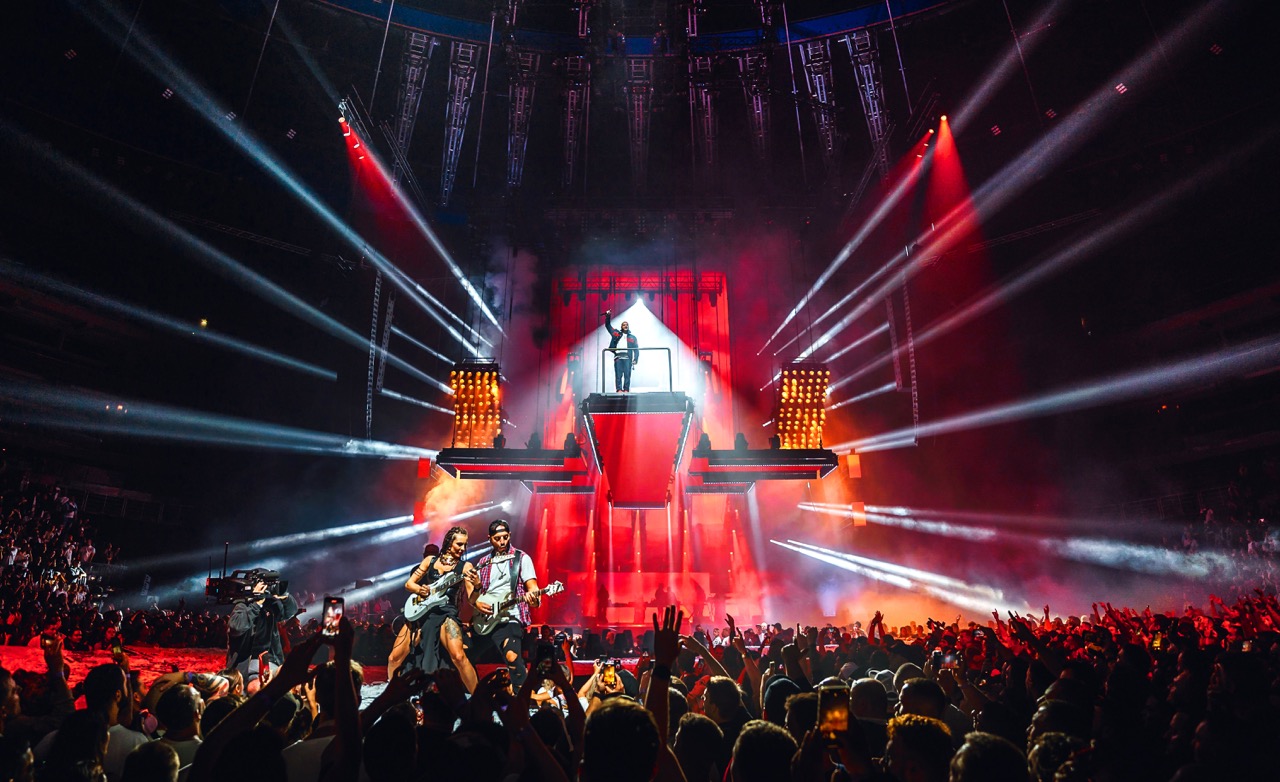
By any measure, the rap show at 20,000-seat O2 Arena Prague was massive. There were over 400 automated lighting fixtures, 48 controlled hoists and a cross scenic piece that weight six tons.
Featuring Slovakian rap starts KONTRAFAKT trio Rytmus, Ego and Anis, the show awed the sellout crowd. Stunning patterns of light crisscrossed the arena from the 82-foot-high stage rig, venue lights over the crowd turned the entire space into a giant, vibrant light box, and myriad video images from screens as high as 66-feet in the air created captivating imagery.
The transformative panorama was so seamless, it seemed to arise out of the very arena itself. But this was not magic! The entire spectacle was the result of intense and careful planning, as well as some inspired creative vision, on the part of designer Martin Hruška and head of production Head production Cyril Hořánek.
Taking time from his busy schedule Martin Hruška shared an inside look into the anatomy of this stunning rig and told us of plans to replicate this impressive achievement this month in Bratislava, Slovak Republic.
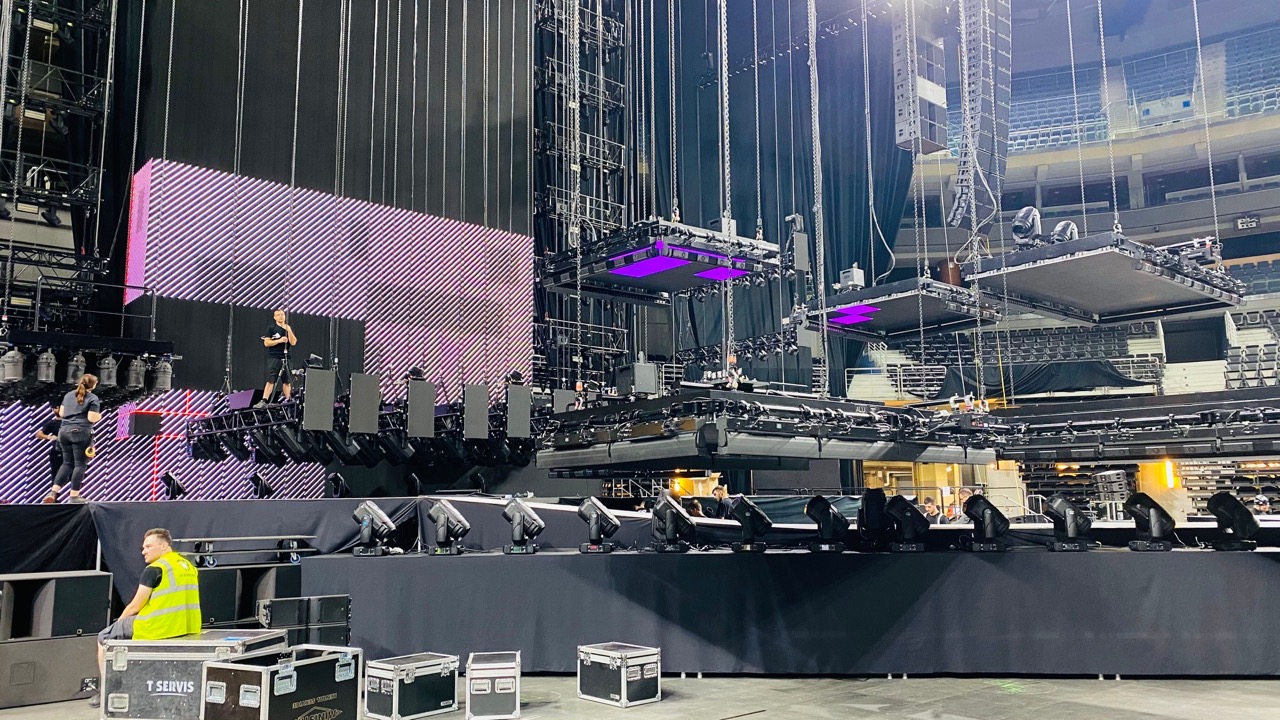
Your design was majestic in terms of its scope and size. Can you tell us how tall your trim was and how wide your stage was?
“Size was important, because the intent of the design was to impress. Our trim was at a height of 25m. The height of all LED screens from the stage was 20 m high, the large LED screen in one piece was 18 m high and 10 m wide. Corner parts were used and the LED screen was bent to a depth of 1.5 m. Originally, the LED screen was supposed to be even higher by 3 m, but I already had a problem with the height of the hall, and a few weeks before the show I had to reduce the overall height, which I regret. If the hall were even higher, I would make the whole scene even bigger.
“The stage was a standard rolling stage 18 x 11m and a height of 1.8m + a catwalk in the shape of a double cross extending into the middle of the hall. By the way, I am also the author of the double cross as a logo, and the music group Kontrafakt bought the rights to use the logo from me and they will be used for merchandising and at other concerts.”
Your massive tower was very impressive. What was your creative vision in including that in your design?
“ When the band hired me, I was considering what path to take in design. I needed to come up with it so that during the PR and advertising of the concert there would be something unique that would be talked about and the fans would say to themselves ‘I have to see this show!’ Thanks to this concept, the stage was able to present itself as the highest stage built in Prague in the O2 Arena, as high as an eight-story building, and multi-ton objects the size of a family house will move above the audience.
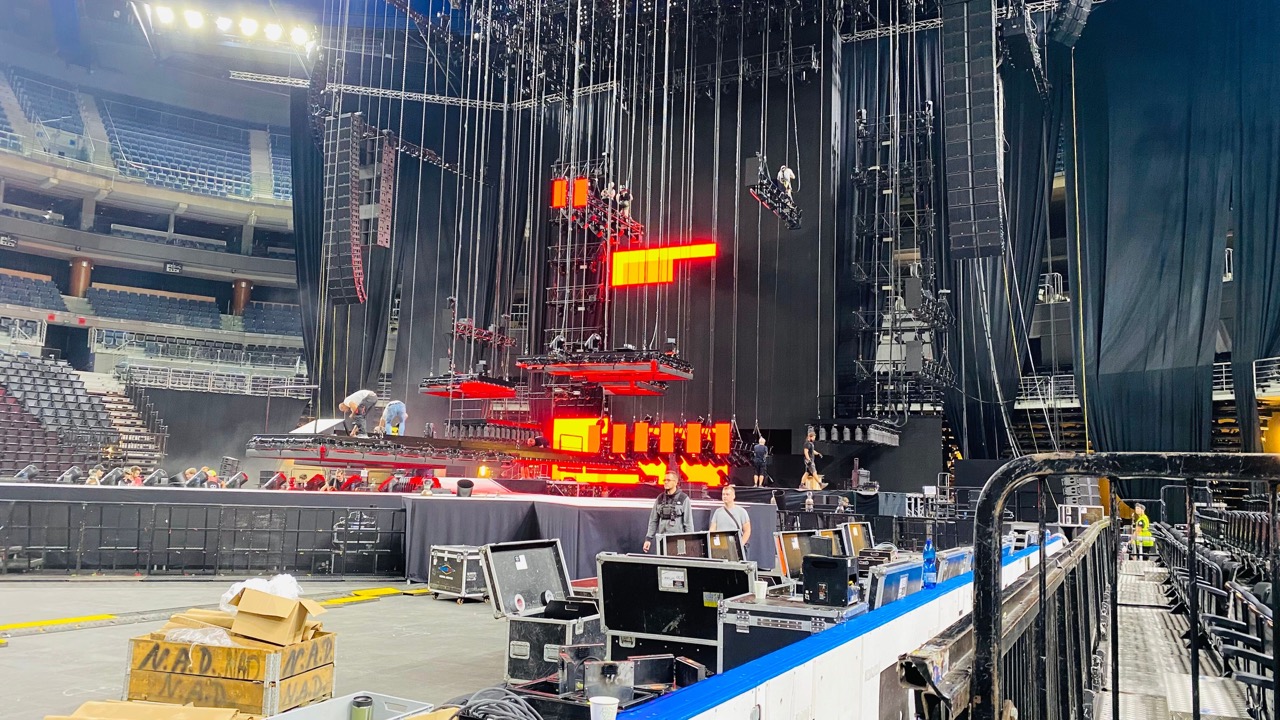
“The creative vision was that I would make a nearly 20m tall artist who would look like a giant standing over the audience. Furthermore, I had a plan to make an intro in one song where the shuttle will take off, and this height of the LED allowed me to do it. At the same time, my experience is that in order for the concert to be successful, I need to amaze the audience as soon as they arrived in the hall, when they have two hours to watch the scene with the open door and they have to be amazed and full of expectations. Then, I have a ready and enthusiastic audience even before the show itself.”
We liked your bold colors. Why did you choose the palette you did?
“There are some colors that work better in the show and some that work less well. I like red the most. When I wrote the script for the show and built the show design, I deliberately avoided certain color combinations. Normally, when I build a show, I make a color scheme in the script so that I don’t repeat myself with colors in an uncontrolled way, but sometimes it conflicts with what the song is asking for, so I have to move the songs in the playlist with regard to the song and the colors after agreement with the artist. It is not such a problem to have the same color during several songs in a row, but the problem is when you have one color for a song, another color for the next song, and for the third you return to the color from the song before that.”
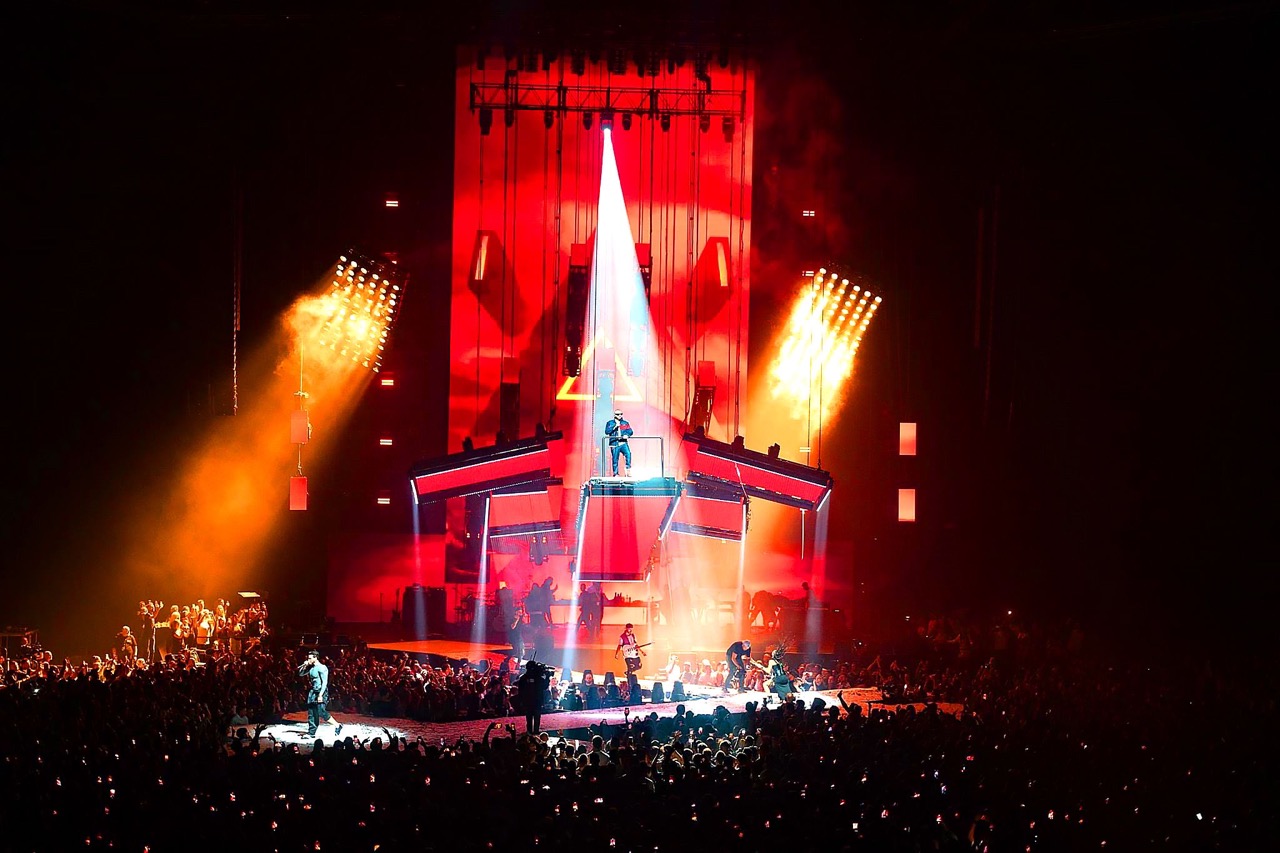
We understand that you had 48 controlled hoists. How did you control them?
“The biggest problem is always to program the automation in advance, we always have to make many sample videos in Sketchup and deliver several thousand trim numbers so that they can program it according to the trim into the control console and then clean everything in the hall – this this requires time that we never have. We built this whole show in one-and-a-half days, without previous rehearsals in an external hall. I consider this to be a great success with such extensive complexity. It requires perfect preparation, a well-chosen crew and good management by head production Cyril Hořánek.”
What were the biggest challenges of this project?
“The main and biggest problem was to move the cross scenic piece, which was equipped with technologies and was intended for the artists to walk on it above the audience. Thanks to this, the weight was over six tons, and moving a six ton object the size of a family house 14 x 10 m turned out to be a big problem.
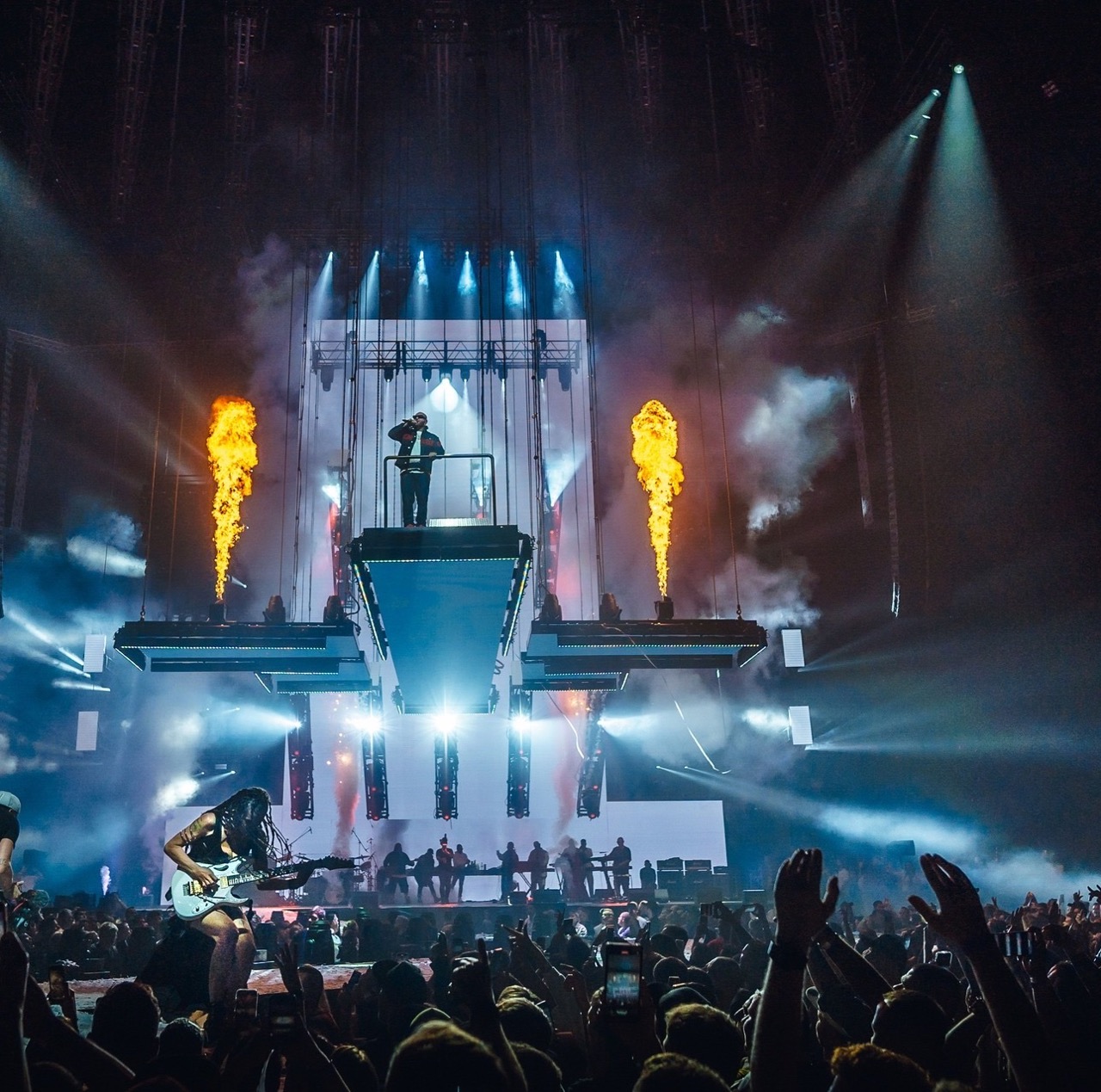
“Originally, this cross was still supposed to rotate around its axis on travel motors located in rails on the ceiling. I gave up on that right after we found out how many risks and complications we would be taking and dealing with. The cable management alone would be so complicated that it would be the price of a normal entire concert.
“So, we stayed only with vertical movement and tilts and even then, we were full of worries when we had problems when tilting the cross with overloading of individual motors. We constantly had to add more and more motors to the plans and provide motors with a load capacity of 1.3 tons. In the finale, it forced me to come up with the solution of dividing the cross into independent moving parts, but this also had the positive effect that I could move the parts separately, which created another effect. This concert gave me many new experiences and ideas for new technological solutions and inspiration for the development of new devices regarding pyrotechnics and mechanics.”
Can you describe your creative vision for this project? What did you want your look to do?
“The artists and their management came to me with the vision that they needed to create something big enough to elevate the artist from the smaller halls to an indoor and stadium artist, which I have done several times in the past with other artists. My creative vision was to amaze, shock and surprise, excite the audience so that they have something to talk about with their friends. This is the best advertisement for the next concert. The bigger the audience and the more expensive the tickets, the more you can invest in the show and create a bigger experience. The bigger the experience, the bigger the audience.”
